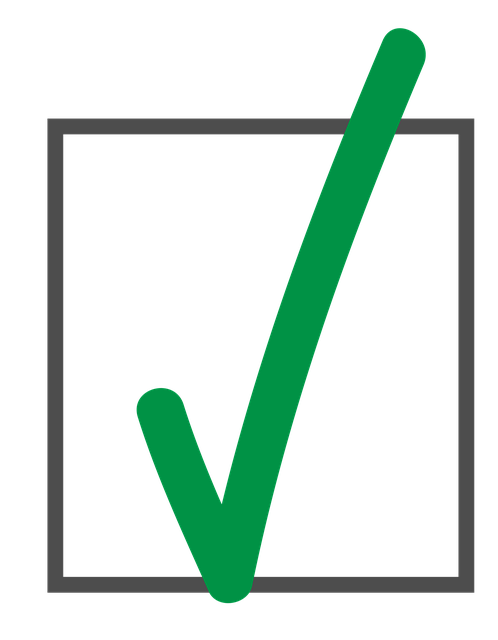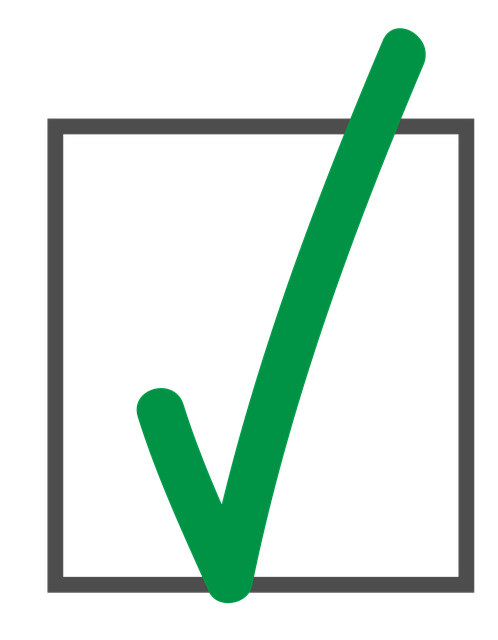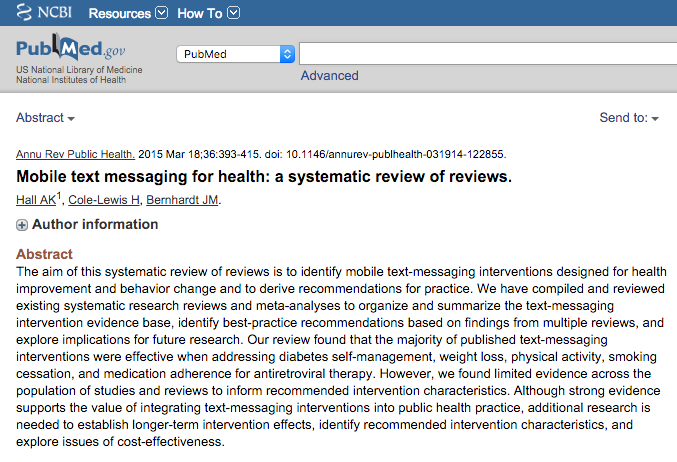Perhaps no other industry has seen as much upheaval in the past five years as health care.
As costs continue rising and the speed of change continues to increase, leaders in the industry are looking to technology and processes to find solutions to some of their biggest challenges.
Between the development and growth of telemedicine and mobile patient monitoring technologies, there are more opportunities for practitioners to provide remote care every day. This certainly seems like it would increase efficiency, but would it also be effective? And scalable?
Meanwhile, similar questions to those are arising in the healthcare industry are extending out to the fitness and wellness verticals with the widespread consumer adoption of mobile health technologies like fitness apps and wearables. Can these tools help create efficiencies for professionals in the fitness and wellness industries as well?
Not only does evidence suggest that remote ‘coaching’ relationships can, and often do produce healthy lifestyle change and improved outcomes, but if we can make effective remote relationships scalable, we can efficiently remedy several significant pain-points in healthcare and wellness.
- Can remote coaching add value, and increase patient engagement for better retention in cash-based practices?
- Can it increase the effective scalability of a wellness coaching business?
- What about making it possible to provide more effective wellness programs across larger organizations?
- Could this model even be a solution for reducing costly hospital readmission rates?
It's very possible that the most effective and efficient way to tackle each of these challenges will have these four ingredients in common ...
- A health practitioner - a health coach, fitness expert, nutritionist, dietitian, nurse or doctor would all qualify.
- Individuals who can benefit from lifestyle change - from chronic conditions impacted by lifestyle, to measurable fitness goals. *** Note: For consistency I always refer to these individuals as ‘patients’ in this article, but in many cases the word ‘client’, ‘member’, ‘employee’, or ‘subject’ may be more appropriate ***
- Mobile health tracking data (from apps, wearables, connected devices - preferably normalized to be made usable by the practitioner.
- Regular ‘touchpoints’ or coaching interactions - preferably based on real data (for effectiveness) and administered via a patient relationship management platform (for scalability).
Leveraging these four resources to produce a highly scalable systematic approach is not simple, but let’s not put the cart before the horse. Before we scale a solution, we have to answer a more fundamental question to know if it’s worth our while:
Can remote practitioner relationships really be effective at producing positive outcomes?
Research: Proof Remote Practitioner Relationships Work
Effectiveness of text message-based health interventions ...
Last March, a meta-analysis was published that highlighted the effectiveness of text message based health interventions in affecting behavior change and outcomes.
Researchers compiled a huge number of past studies in order to decide whether or not targeted text messages from a health professional to a patient can be enough for successful weight loss, and other desired results.
From the paper ...
"Our review found that the majority of published text-messaging interventions were effective when addressing diabetes self-management, weight loss, physical activity, smoking cessation, and medication adherence for antiretroviral therapy."
According to MobiHealthNews, the review entitled Mobile Text Messaging for Health: A Systematic Review of Reviews, based its findings on a collection of 15 perviously published review studies, which all told included research from
"228 text message intervention studies addressing health promotion, disease prevention, and chronic disease self management. Study sizes ranged from 10 to 5,800 participants."
This research has significant implications for the use of digitally enabled health and wellness interventions for population health and patient care.
This conclusion is strengthened by other recent studies that have showed remote telephonic and web-based health promotion yielding nearly identical positive behavior change and outcomes when compared to interventions involving regular face-to-face visits with practitioners.
Effectiveness of phone-based health interventions ...
A 2011 study on the Comparative Effectiveness of Weight-Loss Interventions in Clinical Practice published in the New England Journal of Medicine provides a strong example.
This research compared the effectiveness of face-to-face visits with patients against health promotion through telephonic and web-based remote strategies for weight loss among patients with at least one cardiovascular risk factor.
The conclusion is compelling:
"In two behavioral interventions, one delivered with in-person support and the other delivered remotely, without face-to-face contact between participants and weight-loss coaches, obese patients achieved and sustained clinically significant weight loss over a period of 24 months."
The control group in this study, who was tasked with pursuing “self-directed weight loss” saw almost no improvement - average weight loss of 0.8 kg - compared to the average 4.6 kg and 5.1 kg lost by remotely coached and in-person coached patients respectively.
What did we learn from all of this?
Even a remote relationship when structured around regular touchpoints from the practitioner - whether via phone or text communications - is likely to have as positive an effect on outcomes as in-person visits.
The Details Behind Successful Remote Lifestyle Change
The conclusions reached by these meta-analyses show that remote ‘coaching’ interventions are a viable way to help patients achieve desired outcomes through lifestyle changes.
This is great news, but it’s important we don’t skip the smaller steps that made the outcomes achieved in these studies possible.
Let’s take a second look at what successful cases had in common so we can identify the factors we would need to control in order to expect to be able to reproduce positive results.
1. Patients with health conditions or goals that can be impacted by lifestyle change.
Okay, this one’s fairly easy, but I want to make our assumptions clear as well. Depending on where you go for your estimate, between 70-80% of all healthcare spending can be attributed to poor lifestyle habits.
But keep in mind that this isn’t exclusively a ‘healthcare’ question. Even if a patient doesn’t have a chronic condition, odds are they have a fitness or wellness goal they would love reach.
It may seem a bit frivolous in comparison to reducing stroke risk, but consumer spending shows that 'tighter butts' and 'flatter abs' are worth their weight in gold.
2. Patient and practitioner agreeing on a desired outcome.
This is all too easy to ‘assume’, but in real life this requires clear and effective communication. Both the patient and the practitioner in question must share a mutual understanding of the goal outcome that is the basis for their ongoing interactions.
The more clearly and concisely this can be defined the better. In other words, it must be measurable. For example, our comparatively frivolous goals of 'flatter abs' and 'tighter butts' can be easily turned into measurable goals like:
- 10 pounds of weight loss
- or even better, 2% reduction in percent body fat (if you're tracking with an InBody Band for example)
- or equally usable, 2 inches off the waistline (ANYONE can measure that)
And keep in mind that a useful goal will have (at least) these 3 attributes: Specificity, Attainability, Measurability.
3. Practitioner and patient develop a lifestyle change roadmap that will achieve desired outcome.
First, what specific aspect(s) of my patient’s lifestyle can we change in order to reach our goal? Again, the key is communication. The first step is to identify and agree on a lifestyle factor (or factors) to target.
It’s not just about identifying the lifestyle factors that CAN positively effect outcomes. You have to work with your patient to identify lifestyle factors that they are ready and willing to change.
Yes, a detailed diet and exercise plan would change a patient’s health status. But what is the likelihood of adherence?
Second, how often will you check-in with each patient for a quick touchpoint to review progress and provide feedback? When working with a patient remotely, the consistency of your touchpoints is the basis for the relationship.
If the patient knows they will get input from you on Tuesday every week, then a relationship based on trust and mutual accountability will develop increasing the likelihood for success.
These regular touchpoints are an opportunity to connect with a patient to assess progress toward goals, provide affirmations for successes, and add clear and actionable feedback about what they can improve.
So what do effective touchpoints along the road to a sustainable lifestyle change look like? Here are a couple of brief examples from successful remote relationships:
Use Cases: 2 Wildly Simple, Real-Life Examples
Health Coach Megan Lyons on spotting a behavioral trend that was driving weight loss ...
I have a client who was steadily losing weight and has stalled in the past several weeks (due to that 'reaching a goal' mentality … he lost motivation to reach the NEXT goal because we celebrated the first goal maybe a bit too much! He also had an injury, etc.). I wrote to him [the following] ...
"Just looked at a trend ... when you're losing [weight], you're averaging 7 servings of veggies. When you're maintaining, you're averaging 4-5. Let's up them! :)”
It worked! The very next day he had 7 servings of veggies, and has only dipped below that once since then (with 6 servings).
Dr. Steve Feyrer-Melk on addressing a behavioral trend with a simple, practical solution ...
After watching the trends of John's water intake over A period of two weeks, I noticed a trend. During the week John's intake of water was at a healthy level of 8 to 9 servings per day.
However each weekend he would drop to 4 or 5 servings per day. So I sent him a message:
"John, your water intake during the week is right on. Great job. I notice your weekend intake falls and I'm concerned. Are you inputting all info or is your water intake low on weekends?"
He responded immediately:
"I keep a large sports cup of water on my desk and constantly drink and refill at work. On weekends I don't have a routine so I forget about the water. Any suggestions?"
My reply:
"Go buy yourself a good water bottle, something you can carry around during the weekend. Make this you're 'at-home' source for water. If you need suggestions on brands and where to get them let me know."
Following the suggestion I continued to monitor John. After a couple weeks, his water intake became more consistent. It went up to at least 8 servings per day on the weekends.
Mobile Health Making Remote Coaching Scalable
Research has shown that mobile health app use is associated with SOME improvements in BMI and leisure time activity levels, but the average consumer left to their own devices (get it?) is unlikely to know how to use their data as a tool to help them achieve their desired results.
We need to get this valuable data into the hands of the health practitioners who know what to do with it!
Combining the monitoring capabilities and increasing adoption of the best mobile health apps and wearables with CRM functionality is a match made in care efficiency heaven. (I concede this sounds like a boring version of heaven unless you’re a healthcare economist, but stay with me here).
58% of smartphone owners have used at least one mobile health app according to survey results recently published in the Journal of Medical Internet Research. Market research company The NDP Group has reported that wearables sales DOUBLED from 2014 to 2015.
Consumer adoption of these tools is skyrocketing, and they're going to be looking to health practitioners for guidance on which products are right for them, and how they can get the most out of them. In fact, that’s already happening:
According to a recent survey of ACE certified fitness and wellness professionals on wearables in the fitness industry,
"72 percent of respondents reported that clients or class participants ask for insight and feedback on wearable devices."
That’s an amazing statistic. By the way, more than half of those professionals surveyed didn’t feel they were prepared to answer those questions. Would you be?
In case you were thinking this phenomenon is true only within the fitness industry, consider this; a survey just conducted by ORC International for the Society for Participatory Medicine (SPM) shows that patients are eager to partner with caregivers to live healthier lives.
"84% of the survey's 1,012 respondents say they believe self-monitoring apps and devices can boost health management efforts; 81% say are likely to use a mHealth device when recommended by a provider."
"What's more, 76% of respondents say they are willing to use an easy and accurate mHealth device, and 77% believe such technology would be beneficial for patients and care providers."
Data from these increasingly pervasive fitness tracking technologies can now be made readily accessible to health practitioners if they have the right tools. And having ongoing access to real data on the lifestyle habits of patients, showing how they are able to adhere to prescribed lifestyle changes is invaluable for practitioners.
Imagine if you normally see a patient twice a year, knowing two months in that they are beginning to fall off track for their goals and being able to address it immediately - rather than 4 months later - with actionable feedback based on real data.
That’s the power of combining mobile health with a practitioner. And that’s why tools that make this type of relationship effective and scalable can be game-changing for wellness and healthcare professionals.














